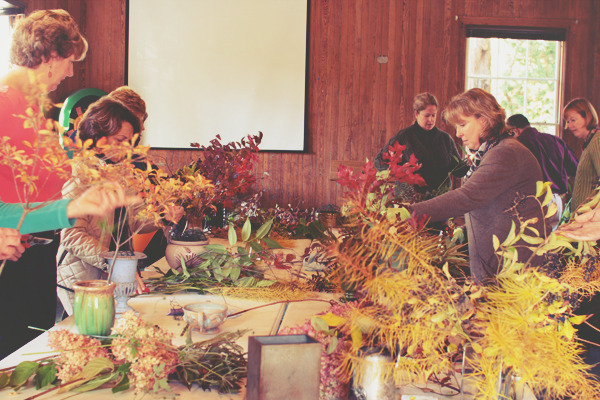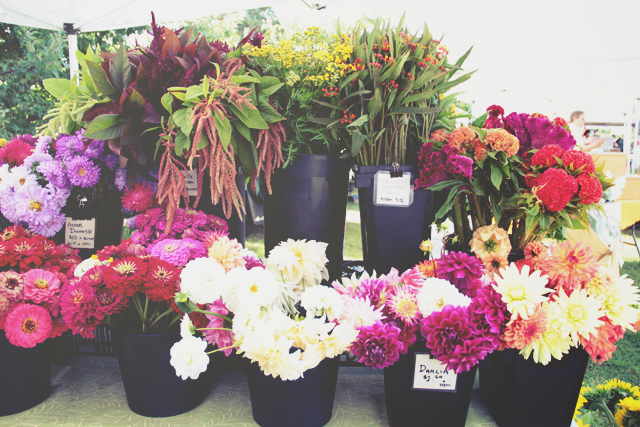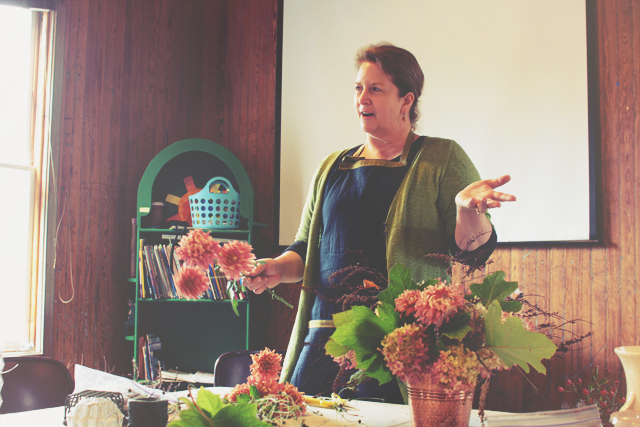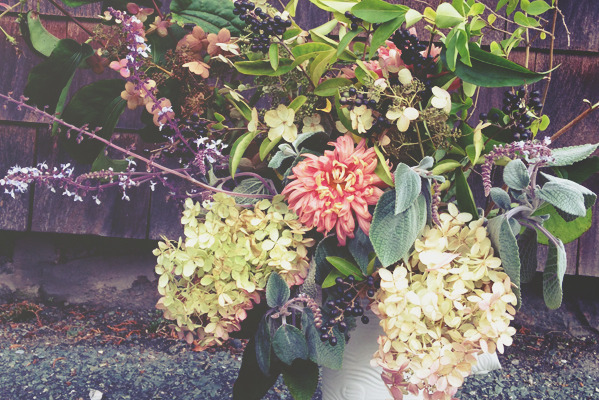 After years of drooling over images of gorgeous arrangements from my favorite florists Saipua, Floret, and Studio Choo, I started to learn about a growing community (pun intended) of florists, farmers, and flower lovers who are advocating for the production and use of locally grown flowers, often called the Slow Flower movement.
After years of drooling over images of gorgeous arrangements from my favorite florists Saipua, Floret, and Studio Choo, I started to learn about a growing community (pun intended) of florists, farmers, and flower lovers who are advocating for the production and use of locally grown flowers, often called the Slow Flower movement.
Like the Slow Food movement, the Slow Flower movement champions sustainably and locally grown flowers. In 2007, a book named “Flower Confidential” was published that revealed a hidden darkside to the $40 billion international cut flower industry. Eighty percent of the flowers used in this country are imported, and were likely grown with harsh chemical pesticides and fertilizers, on farms with hazardous working conditions. The Slow Flower movement isn’t just promoting a more beautiful, fresh, and diverse end product (see the photos below of Robin Hollow’s gorgeous flowers at the Coastal Growers Market this summer). It is supporting smaller farms in our own country, environmentally-friendly growing practices, and a more engaged conversation about these amazing plants that are such an important part of our culture.
A driving force behind this movement is Debra Prinzing, who has written two books on the subject and who travels around the country heralding this cause through her website, and a unique, educational and entertaining podcast. When I found out via the Blithewold Blog that she was coming to town to teach, I signed up for the Eco-floral arranging class immediately.
Since it was an early morning in November I wasn’t sure what materials we would have to arrange with, but as you can see below this wasn’t an issue. Thanks to the Blithewold staff, some local flower farmers and some of the class participants who snipped from their own landscapes, the entire perimeter of the large barn classroom was lined with buckets overflowing with flowers and foliage in colors ranging from green to white to purple to a gorgeous and glowing fall russet.



 Debra gave us some background on her work supporting sustainable flower farmers and about the state of the flower industry. She then discussed how you can begin to structure an arrangement, using alternatives to the nasty and toxic floral foam such as tape, chicken wire, and vintage floral frogs and pin frogs. The green oasis floral foam so prevalent in the industry today never biodegrades, and is made with formaldehyde. We got a sneak peek at a promising new substitute called Floral Soil.
Debra gave us some background on her work supporting sustainable flower farmers and about the state of the flower industry. She then discussed how you can begin to structure an arrangement, using alternatives to the nasty and toxic floral foam such as tape, chicken wire, and vintage floral frogs and pin frogs. The green oasis floral foam so prevalent in the industry today never biodegrades, and is made with formaldehyde. We got a sneak peek at a promising new substitute called Floral Soil.
And then, for the next hour, we got to play around with the amazing plant materials provided. Debra is even more genuine, kind, and encouraging in person then she comes across in her podcast if you can believe it. I look forward following her efforts advocating for local flowers and the farmers who grow them.
And of course, an essential element to any creative class nowadays is photographing your work in a Pinterest-worthy setup. Check out the great Blithewold writeup to see more photos!
Tips for Supporting the Slow Flower Movement
- Slowflowers.com has an extensive directory of florists who use locally-grown flowers and farmers who grow them. It’s true that some parts of the country will have a better year-round supply of flowers because of their climate. If you can’t buy locally grown flowers, try looking for or requesting flowers that are certified American Grown.
- Here in Rhode Island, we have Robin Hollow Farm, Greenlion Design, and The Local Bouquet. But there are also several farms and florists in neighboring Connecticut and Massachusetts who grow or sell locally grown flowers.
- If you are a bride to be planning your wedding (Congratulations!) consider using locally-grown flowers for your event. It may require you to be a bit more flexible on what variety or color of flowers you use, but know that you will be getting a beautiful and fresh arrangement that is a unique snapshot of what’s in bloom at that special moment of the season.








Caitlin, this is such a great post. I’m so glad you participated in the workshop — you’re arrangement was gorgeous (I’ll bet it still is!) and I look forward to seeing you at Blithewold again and again!
Thank you so much Kris!! I will definitely be back 🙂
Great post Caitlin! It was a pleasure to meet you at the workshop which was as much fun as it was informative. I do hope to see you again.
Thanks so much Layanee! It was so great to meet you and learn about your blog!
Isn’t Debra great! She’s doing great work. And it’s hard not to have a good time when surrounded by florists. They’re a cheerful bunch!
Thanks so much for your comment Alden, I agree – the whole floral design thing can be addicting 🙂